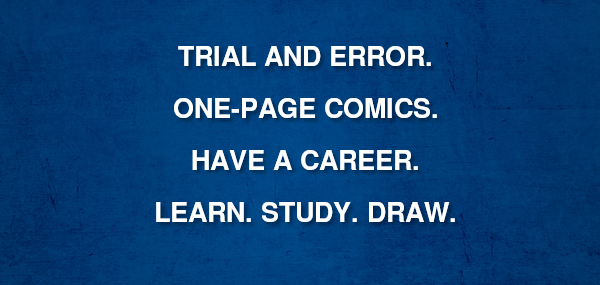Matt Séneca es uno de mis autores predilectos. Habiendo participado en el círculo de crítica de comics cerca de un lustro, se lanzó de lleno al campo de la ilustración secuencial. Bajo su sello de VERY FINE COMIX, Séneca no solamente entrega trabajos de corte independiente de buena manufactura sino que constantemente acumula herramientas narrativas para contar historias en múltiples formatos, géneros y estilos.

Pero dicha versatilidad no la adquirió de la noche a la mañana. Para él fue importante no solo abandonar el terreno de la crítica sino analizar profundamente los mecanismos del arte secuencial y ponerlos en práctica por cuenta propia. De su propia experiencia, Séneca comparte 3 consejos indispensables para quienes desean sumergirse en la aventura gráfica.
Publicado originalmente en http://mattseneca.tumblr.com/
– – – – – – – – – –
Anonymous asked: How did you learn how to draw?
Trial and error all the way. I had two years of “drawing” class in high school before I dropped out—the one thing it really taught me was the basics of one-and two-point perspective, and how to actually sit down and draw for (at least) an hour every day.
A few years after that I started dickin’ around drawing little one-page comics, which I hadn’t done since I was a kid. It’s all been self-taught from there. If I had to boil it down, the three main pieces of advice I’d give are…….
1. Take your “career” seriously from jump street. If you want to draw well enough to actually do anything with it, you need to draw for a significant period of time every day and be constantly mindful of improving. Create projects that you force yourself to finish. Interrogate your finished work for bad tendencies and weaknesses. Make conscious decisions to switch up your style and working methods with each new project. And (this is the hardest) try to also figure out what you are good at.
2. Learn to draw the human figure. In my opinion, you *NEED* a grounding in realistic figuration to get to most of the interesting places art can take you. This is one corner you can’t cut. Work obsessively on your figures, and don’t allow yourself to be lazy about them. Your art will live or die on their strength.
3. Study the artists you like and want to emulate. Just about every artist whose work speaks to you will have something you can take from them, even if you don’t want your finished stuff to look at all like theirs. Try as hard as you can to articulate and write down (even if it’s just to yourself) what things specifically about your influences’ work appeal to you. Then do those things.
But mostly, if you wanna draw just draw. The only way you can ever do it is to DO IT.

